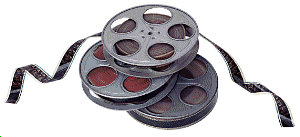Depth of field:
Range of distances before a lens within which objects can be photographed in sharp focus.
In general, lenses with a shorter focal length (wide-angle) possess a greater depth of
field than those with longer focal lengths (telephoto).
Deep Focus:
refers to a greater depth of field achieved with the combination of shorter focal length
lenses, faster film stock, and intense lighting; objects in extreme foreground and extreme
background, and all planes between, are in sharp, crisp focus.
Selective
Focus: allowing only one plane within the frame to be in focus, and
allowing the others to blur; often helps draw viewer=s attention to character=s faces (or
whatever object is in focus).
Racking (or pulling)
focus: a type of selective focus in which the focus shifts from
one plane to another in mid-shot.

